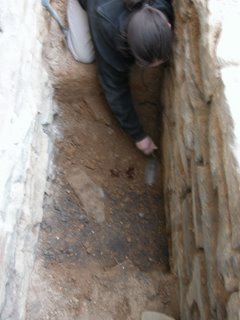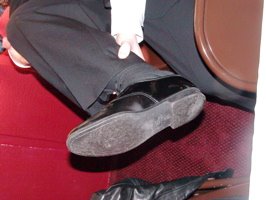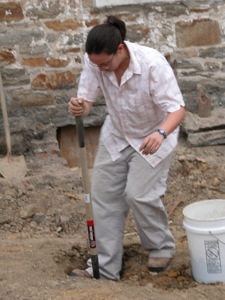A link and a book recommendation
Well, now that all that crazy wedding stuff is over, hopefully I'll be able to begin posting on a regular basis again. I'll begin by making two recommendations, one for a website and the other for a book. The website is the American Federation of State, County, and Municipal Employees (better known as AFSCME) Laborlinks page (available at http://afscme.org/otherlnk/whlinks.htm#other) devoted to women's labor history. Not only is there an incredibly long list of links to various websites about women's labor history, but there's even a whole section just for "Women and Labor in the Textile and Garment Industries."
My second recommendation is for a book that I just recently read in one of my classes--Ladies of Labor, Girls of Adventure by Nan Enstad (published by Columbia University Press). This book recounts and provides a new interpretation of the famous shirtwaist workers' strike in New York in 1909 (in which some 15-20,000 female workers participated). I think this book is really important for the way in which Enstad critiques previous histories of this strike (which have largely been written from a middle-class, male perspective), and for the alternative reading of this event that Enstad gives. In the process, she also provides a great way of thinking about the female working class and particularly their leisure activities in new ways that don't force us to choose between viewing women workers as airheaded and prone to flights of irrational fancy and viewing women workers as rational, serious social actors. Rather, Enstad demonstrates that this is a false dichotomy. So, given that we know little about Hampden workers' lives in general, and even less about Hampden's women workers, I think that this book provides us with one way of reading the evidence we do have against the grain, giving us the ability to come up with better interpretations of the past.
My second recommendation is for a book that I just recently read in one of my classes--Ladies of Labor, Girls of Adventure by Nan Enstad (published by Columbia University Press). This book recounts and provides a new interpretation of the famous shirtwaist workers' strike in New York in 1909 (in which some 15-20,000 female workers participated). I think this book is really important for the way in which Enstad critiques previous histories of this strike (which have largely been written from a middle-class, male perspective), and for the alternative reading of this event that Enstad gives. In the process, she also provides a great way of thinking about the female working class and particularly their leisure activities in new ways that don't force us to choose between viewing women workers as airheaded and prone to flights of irrational fancy and viewing women workers as rational, serious social actors. Rather, Enstad demonstrates that this is a false dichotomy. So, given that we know little about Hampden workers' lives in general, and even less about Hampden's women workers, I think that this book provides us with one way of reading the evidence we do have against the grain, giving us the ability to come up with better interpretations of the past.















